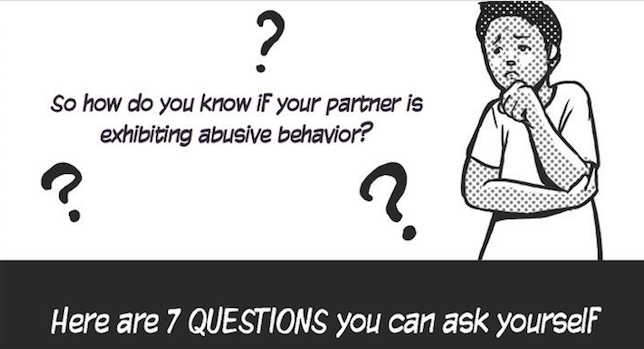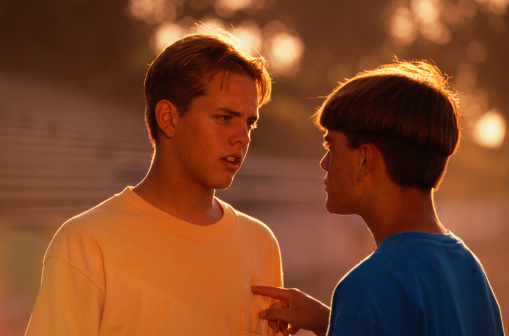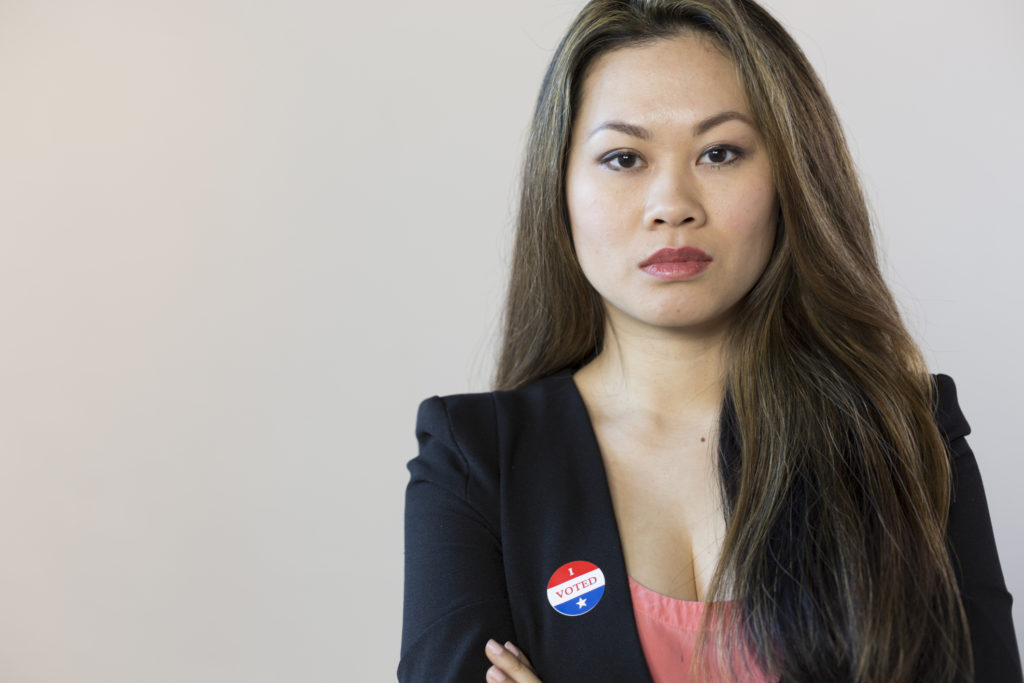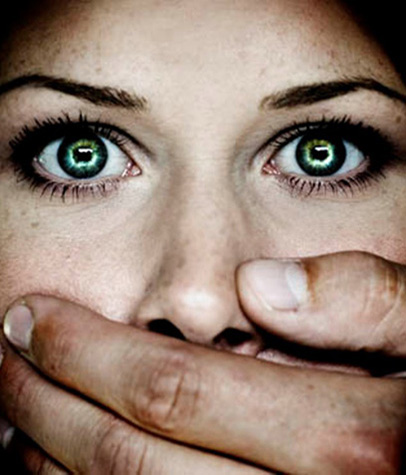Search results for: intimate partner violence
Heartbreaking Questions This Poet Has Heard As a Woman, Midwife, and Advocate
“What do I do?” Have you ever been asked these questions – or asked them yourself? Poet and doula Kayla Q captures the strength and vulnerability of being a woman in a sexist society in this poignant performance.
Read More4 MRA Arguments That Actually Have a Point – And Where They Go Wrong
WAIT – if MRAs are so anti-feminist, then how can we agree with their points? Here’s where men’s rights activists are on the right track – and what they’re missing.
Read MoreWorried Your Partner Is Emotionally Abusive? Check Out These 7 Warning Signs
There’s a misconception that abusive partners always use physical violence, which can make it hard to tell if your partner’s abusive. This comic can help you figure out what’s happening and what to do next.
Read More6 Ways to Confront Your Friend Who’s Abusing Their Partner
Do you know what to do in a situation like this? This article advises against the usual approach of villainizing an abuser or not believing a survivor, to help you deal with the complex reality of partner violence.
Read MoreTeen Dating Violence: To Find a Solution, First We Need to See the Problem
One-in-three adolescents in the United States is a victim of abuse at the hands of an intimate partner. This isn’t just kids being kids. This is people who are coming of age accepting abuse as normal, paving the way for a lifetime of danger. But before we can see a change, we need to see a problem. And because teen dating violence has been so normalized, we really need to start at the basics.
Read MoreA Letter to Young Feminists Who Date Trump Supporters
This pattern of “agreeing to disagree” with a Trump supporter isn’t just “controversial” – it’s dangerous. This breakdown reveals what you might be missing.
Read More7 Ways Social Justice Language Can Become Abusive in Intimate Relationships
It’s dangerous when social justice ideas – the same ones that empower us – are used to harm people. Here are some signs that this is happening in your life or community.
Read MoreStop Thinking Like a Perpetrator: 4 Ways to Better Support Survivors of Sexual Violence
Despite progress in raising awareness of sexual violence, there are still those who attempt to lay people’s trauma on a spectrum with one end being “shut up, it’s not that bad” and the other end being “legitimate rape.” All this ends up doing is denying the pain of survivors. Here are four important things we need to do in order to abandon perpetrator logic.
Read More3 Reasons You Wouldn’t Believe My Ex Abused Me – And Why They All Mean You Should
Does this stirring account cover any reason you thought someone was lying about being abused? This shows so clearly why we have to believe survivors.
Read MoreMen Holding Each Other Accountable for Rape Culture
In his spoken word poem “Action,” Guante reflects on how he should have held his friend accountable for the abusive way he spoke about and treated his girlfriend. He analyzes how the media teaches men to think of sex as violence and to victim blame. This poem asks men to speak up and reminds them that rape culture is dependent on their silence and complacency.
Read MoreHow To Help A Loved One Who’s Being Abused By Their Partner
( Trigger Warning) Domestic violence, dating violence, relationship violence — it’s not something we like or know how to talk about. Or perhaps more accurately, it’s not something we know how to talk about, especially when it’s happening to someone we love. But it’s important we learn how to talk about it in ways that actually help them, which is far more difficult than you may think.
Read MoreHow Intersectional Feminism Transformed Me from an Asshole to an Activist
After leading my students, all high school seniors, on a field trip to a local domestic violence (DV) organization to get a better understanding of intimate partner violence (IPV), I didn’t expect to be the one to leave with an epiphany. On the bus ride back to school, I messaged my ex who had been…
Read More50 Shades of Abuse: 10 Signs of Unhealthy Relationships a la Christian Grey
There are a lot of reasons why folks are up-in-arms about “50 Shades of Grey.” Here are ten ways that the book (and their subsequent film) shows clear signs of abuse – especially emotional abuse, which can be harder to pinpoint if you’re not sure which red flags to pay attention to. Use this article as a guide for thinking through the relationship in “50 Shades.”
Read More9 Ways to Be Accountable When You’ve Been Abusive
It can be hard to admit, but abusers are in our communities – they’re not just “monsters in the night.” If you’ve caused pain, this guide can help bring accountability and healing.
Read More‘Be a Man?’ Watch Boys and Men Ages 5-50 Respond to This Common Phrase
Here’s what happened when boys and men of various ages were asked to respond to “be a man.” What does this phrase mean to you?
Read MoreFrom Manspreading to Mansplaining — 6 Ways Men Dominate the Spaces Around Them
Before you jump in with “Women do it, too!” or “It’s no big deal,” check out this info on how male entitlement relates to much bigger issues. We see #2 around here a lot.
Read MoreHow to Exercise Our Right to Defend Ourselves without Being Victim-Blaming
Women get tons of useless advice about how to “protect” ourselves. Whether or not we follow the advice, we’re still blamed for our own assaults. We all have the right to assert our boundaries, but saying that we can defend ourselves sounds like victim-blaming. So how do we reconcile those two messages? One way is through feminist, empowerment-based self-defense.
Read More5 Awesome Ways Feminism Is Good for Your Mental Health
Your feminism can help the movement – but what about your mental wellbeing? Here’s some encouraging research on how feminism can boost your mental health.
Read More160+ Examples of Male Privilege in All Areas of Life
How do we know male privilege is real? These everyday examples of gender inequality are a start. By naming these, we can start working to free ourselves and others from the impact.
Read More5 Ways Taylor Swift Exemplifies White Feminism – And Why That’s a Problem
Do you have problematic faves? We all do – and this author’s fave Taylor Swift is no exception. Here’s why addressing this brand of “white feminism” matters.
Read More




















